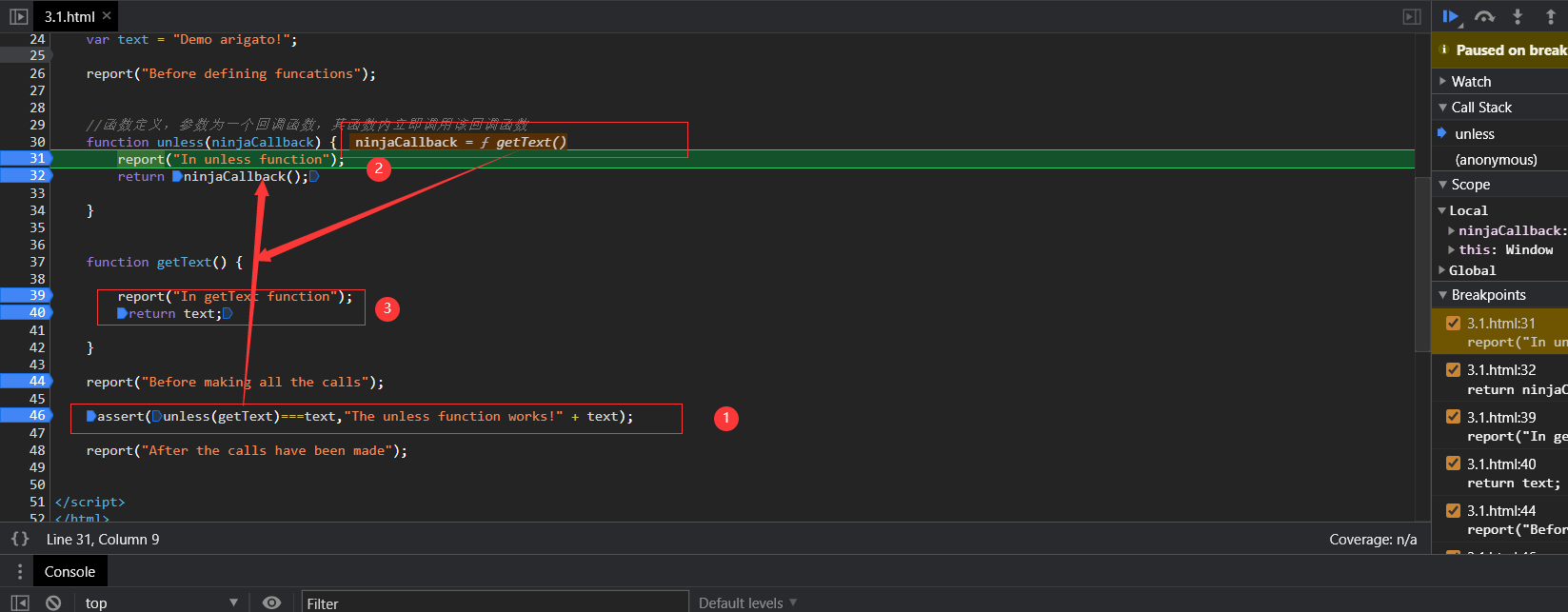定义与参数_简单的回调函数例子
<!DOCTYPE html>
<html lang="en">
<head>
<meta charset="UTF-8">
<meta name="viewport" content="width=device-width, initial-scale=1.0">
<title>模块模式</title>
<script src="../unitl/test.js"></script>
<style>
#results li.pass {color:green;}
#results li.fail {color:red;}
</style>
</head>
<body>
<ul id="results"></ul>
</body>
<script>
var text = "Demo arigato!";
report("Before defining funcations");
//函数定义,参数为一个回调函数,其函数内立即调用该回调函数
function unless(ninjaCallback) {
report("In unless function");
return ninjaCallback();
}
function getText() {
report("In getText function");
return text;
}
report("Before making all the calls");
assert(unless(getText)===text,"The unless function works!" + text);
report("After the calls have been made");
</script>
</html>
接下来我们来看看看这个简单函数是如何执行的,首先执行这一句。

紧接着执行回调函数

如图,useless(getText)调用后的执行流。getText作为参数传入useless函数并调用。useless函数体内对传入函数进行调用,本例中促发了getText函数的执行。(即我们对getText函数进行回调)。
完成这个过程很容易,原因就在于javascript的函数式本质让我们能把函数作为第一类对象。更进一步说,我们的代码可以写成如下形式:
var text = 'demo arigato';
function useless(ninjaCallback) {
return ninjaCallback();
}
//直接以参数形式定义回调函数。
assert(useless(function(){return text})===text,"The useless function works!" + text);





 浙公网安备 33010602011771号
浙公网安备 33010602011771号